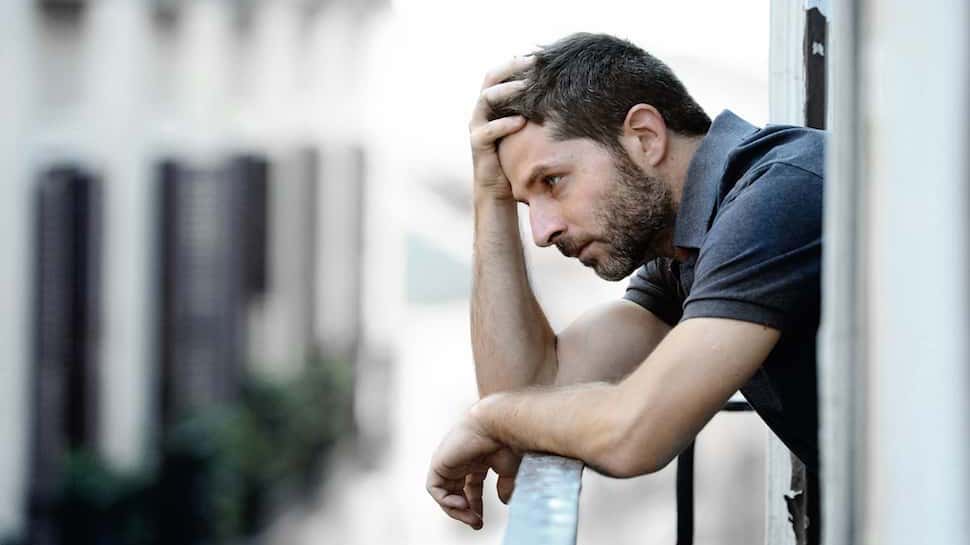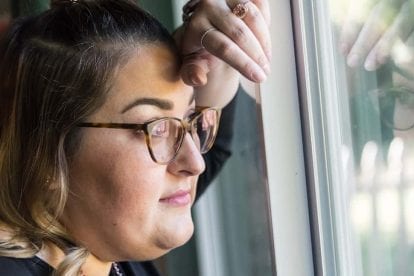
Childhood Trauma
Childhood trauma is any experience that is very frightening or dangerous. The impact of trauma can be immediate, causing significant distress and behavioral changes, but it can also be long-lasting. Adults who experienced trauma as children are at a greater risk for a number of physical health conditions and mental illnesses, including post-traumatic stress disorder. Any diagnosis of mental illness in adults should include screening for trauma so that past events can be processed and faced during treatment.
What Is Childhood Trauma?
Childhood trauma is a dangerous or frightening event that a child between the ages of infancy and 18 years of age experiences personally or witnesses. Trauma evokes strong, negative emotions as well as a physical response. It triggers the natural fight-or-flight response, which causes a person to either fight back or run away as a survival mechanism.
A trauma does not necessarily cause lasting effects. In some children, though, the impact of one or more traumatic experiences can lead to child traumatic stress. This is a persistent reaction to the traumas that may include emotional distress, depression, anxiety, changes in behavior, difficulty developing healthy relationships, developmental issues, and physical symptoms like weight loss or pain. The repercussions can last for years and increase the risk of problems later in life.
Types of Childhood Trauma
The perception of trauma is subjective, and it can be anything that is frightening or poses a danger to a child or to someone he or she cares about. But, there are some more common types or categories of experiences that are often traumatic for children, including:
- Neglect
- Physical or sexual abuse
- Emotional abuse
- Bullying
- Witnessing violence, including domestic violence
- Community violence and terrorism
- Sudden loss of a loved one
- Mental illness in the family
- Life-threatening illnesses or accidents
- Separation or divorce of parents
- Deployment or incarceration of a parent
- Natural disasters
- Refugee experiences
- Commercial sexual exploitation
Facts and Statistics
Childhood trauma is much more common than most people realize. By the age of 16, more than 66 percent of children have experienced at least one traumatic event.
- One survey of children between the ages of 12 and 17 found that eight percent had been sexually assaulted at least once, 17 percent had been physically assaulted, and 39 percent had witnessed violence.
- One in five students in high school has been bullied and one in six has experienced cyberbullying.
- Fifty-four percent of U.S. families have been impacted in some way by a disaster.
- According to the American Psychological Association, almost all children who experience trauma will have serious but short-term distress, and most will return to normal functioning.
- Most of the children who need professional help after trauma do not get psychological care.
- One study found that 18 percent of young people in the U.S. have lost at least one friend or family member to homicide.
Symptoms and Diagnosis of Childhood Trauma
Sometimes trauma is obvious, such as when a child loses a parent or experiences a natural disaster. Other types of traumatic events may be more easily hidden, such as abuse or neglect. Regardless of the type of trauma or whether it is visible, a child’s negative reaction to it will result in observable symptoms.
While some children will cope better than others, depending on individual factors and their level of support from adults, there are characteristic signs by age of child traumatic stress.
Preschool-aged children and toddlers may:
- Have nightmares
- Cry more than usual
- Eat less and lose weight
- Fear being separated from caregivers or parents
- Show poor or delayed development
- Act out trauma during play
- Exhibit behavioral changes
Children who are a little older, generally those in elementary school, may show slightly different signs of a bad reaction to trauma:
- Acting more afraid than usual, worrying about personal safety or that of others
- Feeling guilty or ashamed
- Sleeping poorly
- Struggling to concentrate
- Declining performance in school
- Repeating descriptions of the trauma to others
- Feeling numb
- Startling easily
Children in middle school and teenagers in high school exhibit different troubling behaviors and emotions, including:
- Feelings of depression and being alone
- Feeling different from others
- Describing the trauma over and over
- Having difficulty sleeping
- Feeling numb about the trauma
- Engaging in risky behaviors
- Avoiding places or people that remind them of the trauma
It is normal for any child to have a troubling reaction to trauma, but with time he or she should return to typical functioning and behaviors. If they do not, a mental health professional needs to evaluate and diagnose the child. There are a few trauma-related mental illnesses that a child may be diagnosed with, including post-traumatic stress disorder (PTSD), acute stress disorder, adjustment disorder, or reactive attachment disorder. Even if a child cannot be diagnosed with one of these, evaluation by a professional is important for determining if they are coping or if they need treatment and support.
In adults who are being screened for mental illness, many professionals will try to determine if there was any childhood trauma in the past. The diagnosis of PTSD, depression, or another mental illness may occur years after a traumatic experience and be a direct result of it. Evaluating for childhood trauma is an important part of diagnosing an adult with mental illness because that trauma will need to be addressed in treatment.
Call for a Free Confidential Assessment.
877-727-4343Causes and Risk Factors
The trauma itself is the cause of a poor reaction and lasting mental health issues, but exactly why some children will go on to have persistent challenges or later difficulties is not known. There are known risk factors, though, both for being more likely to experience trauma and for having a poor or persistent negative reaction to traumatic events. For instance, a child is more likely to experience trauma if he or she lives in a high-crime neighborhood or has a family member with an untreated mental illness. It is important to realize, though, that any child in any situation may experience trauma.
There are both risk and protective factors for ongoing traumatic stress or developing a trauma disorder or other mental illness. Protective factors that help children better cope with trauma include having a supportive and nurturing family, stable family relationships, financial stability, and parents in good physical and mental health. Factors that put someone at risk for having a persistent negative response to trauma or a later mental illness include:
- Experiencing more severe trauma or more frequent trauma
- Being closer to the event, such as being the victim instead of witnessing violence
- Having an unstable family or home environment
- Having an existing mental illness or behavioral disorder
- Lacking support and nurturing from adults after the traumatic event
Co-Occurring Disorders
Traumatic stress can easily lead to other mental health conditionals or behavioral issues, especially if the trauma is not addressed or the child does not receive treatment. Children may suffer from behavioral issues, learning difficulties and poor performance in school, and may even be more likely to be involved in the juvenile justice system.
Adults who experienced childhood trauma are at a greater risk for a number of complications and co-occurring disorders that may require diagnosis and treatment:
- Chronic pain and physical illnesses like diabetes or heart disease
- Depression
- Anxiety disorders
- Obsessive-compulsive disorder
- Post-traumatic stress disorder and other trauma-related mental illnesses
- Dissociative disorders
- Self-harm
- Suicide
Treatment and Prognosis of Childhood Trauma
Immediate support for a child who has experienced trauma can help prevent many of the negative consequences. In some cases, the nurturing and support of parents and other family or caregivers is enough to avoid long-term harm. For those children who need professional care, mental health professionals may use cognitive behavioral therapy or trauma-focused therapies to help them learn to cope in healthy ways.
Adults who experienced trauma and did not get the support they needed as children may face a number of physical and mental health issues that need to be addressed. Exactly how an adult will be treated varies and depends on their individual complications. For this reason, careful screening by a professional is essential. It can lead to the correct diagnoses and then a tailored plan for treatment.
In general, for trauma and related conditions, the biggest part of treatment is trauma-focused therapy. This may be a type of cognitive behavioral therapy that emphasizes the connection between trauma and all areas of a person’s well-being. Or, it may involve more specific types of therapy, such as exposure therapy, which helps the patient face and process trauma and memories in a safe and productive way. The goals of any trauma-focused therapy are to learn about the trauma, identify triggers, work on healthy coping mechanisms, reduce symptoms, and process memories and negative emotions in a safe environment.
Treatment that focuses on healing from past trauma may also include a range of services, such as creative therapies and group support in addition to traditional therapy. Patients may receive outpatient care or feel more comfortable in a residential setting. The most important thing is that they get the professional help they need to finally process and cope with childhood trauma.
Why Consider Bridges to Recovery for Treatment of Childhood Trauma
At Bridges to Recovery, we specialize in diagnosing and treating complex psychiatric and emotional issues such as childhood trauma. We provide compassionate and effective care in a serene residential setting so clients can focus on their treatment and recovery without the worries of external pressures and stressors.
- Private residential accommodations. Our exclusive residential treatment homes have a maximum of six clients, providing a safe, private alternative to a more traditional hospital environment.
- World-class clinical staff. Our expert clinical team provides individual therapy using proven evidence-based treatment modalities to treat childhood trauma.
- Individualized treatment plans. After a thorough assessment, we create a truly individualized treatment plan that offers profound healing and strategies for overcoming the toughest obstacles.
- Health and wellness focused. To ensure your comfort during your healing process, our chefs create delicious healthy, gourmet meals. We also offer yoga, meditation, acupuncture, massage, and physical fitness classes.
At Bridges to Recovery, we believe that exceptional psychiatric, clinical, and holistic care can transform lives. With the utmost dignity and respect, we meet you where you are to develop a vision for the life you wish to have, and offer the care you need to achieve it.





